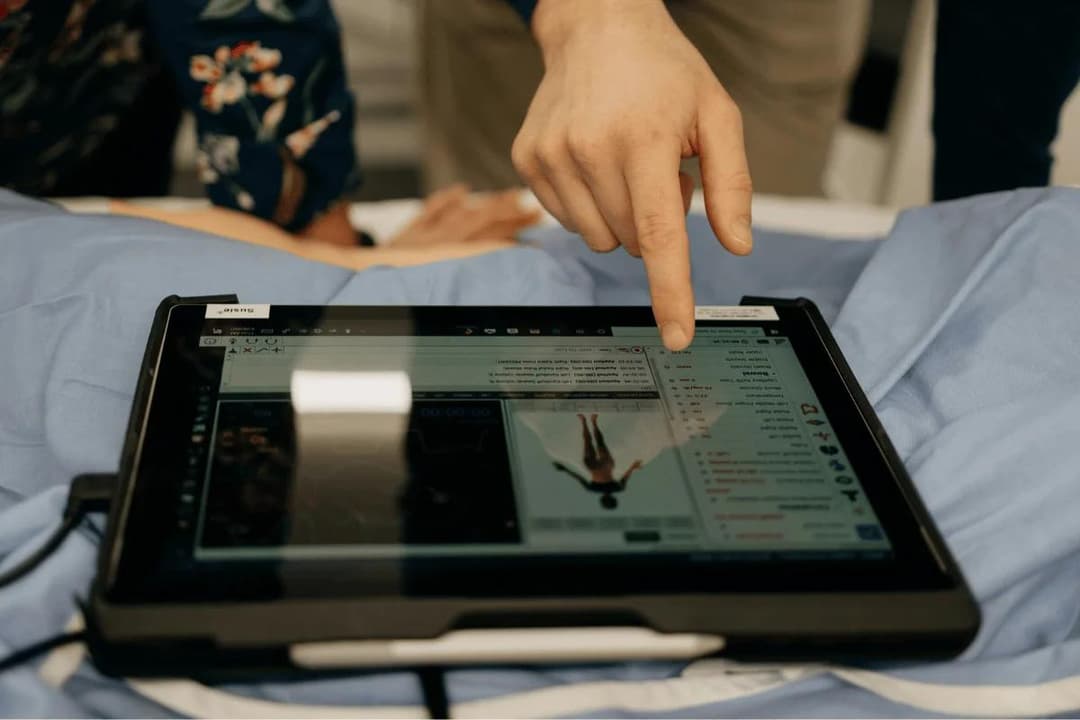
RPM, RTM & Beyond: What Medicare’s 2026 Proposed Rule Signals for Remote Care

Author
Digital health marketing professional with over 10 years of experience bridging clinical and wellness spaces by leveraging innovative technologies, behavioral change programs, and strategic digital marketing.
CMS has released its final 2026 Medicare Physician Fee Schedule (PFS), bringing essential updates for Remote Patient Monitoring (RPM) and Advanced Primary Care Management (APCM). These final rules confirm the new RPM CPT codes and clarify key billing and compliance changes, providing healthcare providers with guidance to deliver connected care programs more effectively and sustainably.
***
Medicare’s 2026 proposed Physician Fee Schedule (PFS) brings forward some of the most meaningful updates to remote care in years. Spanning more than 1,800 pages, the draft rule signals a clear shift from remote care as an optional add-on to an essential component of care delivery, especially for chronic and high-risk populations.
This year’s proposal comes under the leadership of President Donald J. Trump, HHS Secretary Robert F. Kennedy, Jr., and CMS Administrator Dr. Mehmet Oz, who have collectively emphasized the importance of modernizing healthcare to better reflect today’s delivery models.
With major updates to Remote Patient Monitoring (RPM) and Remote Therapeutic Monitoring (RTM), as well as expanded support for digital health tools, the proposed rule introduces long-anticipated changes that could significantly reshape how providers engage with patients, deliver care, and capture reimbursement. For healthcare organizations already offering remote care and those preparing to start, these updates create new opportunities for clinical flexibility, broader eligibility, and scalable, sustainable models of virtual care.
This post unpacks the key changes proposed for 2026, what they mean for RPM and RTM programs, and how KangarooHealth is helping organizations move from complexity to confidence.
Looking Back to Move Forward
Understanding the current RPM framework helps put these proposed changes into perspective. Since CMS introduced the initial CPT codes for Remote Patient Monitoring in 2019, providers have had a reliable, but sometimes rigid, pathway to deliver reimbursable remote care.
Here’s how RPM is currently structured:
- CPT 99453 – Covers patient onboarding, including training and device setup. To bill, the patient must record 16 days of data in a 30-day span.
- CPT 99454 – Covers the supply of the monitoring device and transmission of data, again, billable only with 16 days of data.
- CPT 99457 – Applied to the first 20 minutes of clinical interaction, patient communication, and care planning each month.
- CPT 99458 – Adds additional time in 20-minute increments.
This structure has supported the growth of remote care, but it has also created challenges, including strict time thresholds and barriers to enrollment, particularly for patients who could benefit from shorter-term or intermittent monitoring.
What’s Changing in 2026: A More Flexible, Sustainable RPM Framework
The 2026 proposed rule directly addresses several longstanding pain points in the structure and reimbursement of RPM services. These changes aim to give providers greater flexibility, make remote monitoring more accessible, and support more clinically meaningful interactions.
1. Shorter Monitoring Periods: A New 2–15 Day Device Code
Under the current structure, CPT 99454 (device supply and data transmission) requires patients to record at least 16 days of physiologic data within a 30-day period for the service to be billable. While that worked for many use cases, it created barriers for patients who didn’t need, or weren’t able to complete, 16 full days of data.
CMS is proposing two changes to address this:
- New Code (99XX4): Covers RPM services when 2 to 15 days of data are collected in a 30-day period.
- Revised Code (99454): Would now officially represent the 16 to 30-day data range.
Importantly, CMS proposes reimbursing both codes at the same rate, reinforcing the idea that value lies in the availability and clinical use of monitoring, rather than just the number of transmissions. For practices, this could mean fewer denials, greater billing flexibility, and more patients eligible for care.
2. Improved Time-Based Billing: A New 10-Minute Management Code
Currently, RPM care management time must hit a full 20-minute threshold to be billed under CPT 99457. That “all-or-nothing” rule has made it harder for clinicians to capture the value of shorter, but still meaningful, patient interactions.
Here’s what’s proposed:
- New Code (99XX5): Would allow billing for 10 to 20 minutes of RPM treatment management services in a calendar month.
- The proposed reimbursement rate is approximately half of 99457’s, but it offers a way to account for smaller touchpoints without losing value.
Also important: CMS has opted not to reduce reimbursement for existing codes 99457 and 99458, despite external recommendations to do so. This ensures continued stability for organizations already running RPM programs while enabling new efficiency for those just starting out.
Continued Momentum for Remote Care
The 2026 proposed rule signals that CMS is listening to the evolving needs of providers and patients alike. Several updates support a broader, more flexible future for remote care, including:
- The extension of key telehealth flexibilities through 2029
- New RPM codes that allow for shorter monitoring durations (2–15 days within a 30-day period), increasing applicability across different patient populations
- The removal of outdated requirements for online-only Diabetes Prevention Programs to maintain in-person components
- Expanded coverage for digital therapeutics, including treatments for ADHD and other behavioral health conditions
- The elimination of frequency limits for inpatient, nursing facility, and critical care telehealth visits
- Open discussion around expanding reimbursement for a wider range of digital tools that support chronic disease management and mental health
These changes reflect a growing understanding of how care is actually delivered today and the importance of ensuring uninterrupted access to remote care services that improve outcomes and extend reach, especially for patients with chronic or complex needs.
The 2026 proposed rule reinforces what we’ve believed from the beginning: remote care isn’t a supplement; it’s a critical part of modern healthcare delivery, says Dr. Kang, CEO & Founder of KangarooHealth. “These updates represent meaningful progress toward sustainable, patient-centered care models that can scale across communities. We’re encouraged to see CMS acknowledging the realities providers face on the ground, and we remain committed to helping organizations implement connected care programs that are clinically sound, operationally feasible, and deeply human, while boosting HEDIS scores, improving STAR ratings, enhancing quality measures, and reducing patient risk.
What This Means for Providers
If finalized, the 2026 PFS rule will further solidify remote care as a core component of Medicare’s delivery model. These changes are more than administrative; they reflect a growing shift toward modern, proactive care delivery, where digital tools, continuous engagement, and team-based support are foundational.
Now is the time for healthcare organizations to:
- Evaluate readiness to scale or optimize RPM programs
- Align workflows to meet general supervision requirements
- Prepare for updated billing structures and documentation
- Partner with platforms that support ease of use, engagement, and compliance
With notable updates to Remote Patient Monitoring (RPM) and expanded support for digital health tools, the proposed rule highlights CMS’s commitment to making virtual care more accessible, flexible, and sustainable. For organizations already delivering remote care or those just beginning to explore it, these updates create new pathways to expand access, improve outcomes, and reduce patient risk.
At KangarooHealth, we help providers operationalize what’s next, offering a comprehensive, clinically grounded platform that supports scalable care delivery.
Let’s build what’s next, together.
Start the Conversation.
CPT Copyright 2025 American Medical Association. All rights reserved.
CPT® is a registered trademark of the American Medical Association.

Sesily Maness
AuthorDigital health marketing professional with over 10 years of experience bridging clinical and wellness spaces by leveraging innovative technologies, behavioral change programs, and strategic digital marketing.


